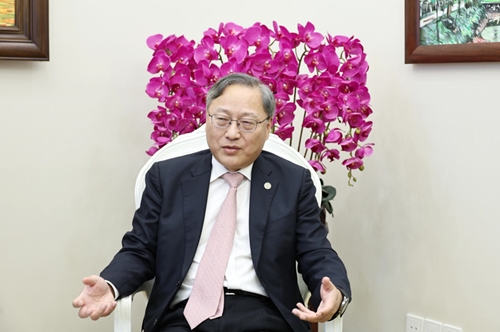Speaking to the Vietnam News Agency, Zhang Jianguo, former Director-General of the Western Europe Department under the International Liaison Department of the Communist Party of China Central Committee and Secretary-General of China’s Charhar Institute, said Vietnam’s 80-year socialist journey is a historical story of struggle, moving from national independence to national prosperity.
According to Zhang, Vietnam’s accomplishments are not only evident in institution building or economic growth, but also reflect the resilience and vitality of the socialist system.
    |
 |
|
Zhang Jianguo, former Director-General of the Western Europe Department under the International Liaison Department of the Communist Party of China Central Committee and Secretary-General of China’s Charhar Institute |
He noted that the Communist Party of Vietnam (CPV) had led the nation through a dual revolution: winning independence through resistance wars against the French colonialists and the U.S. imperialists, and then consolidating sovereignty after the national reunification in 1975 by establishing a framework of comprehensive Party leadership, which laid a stable political cornerstone for later development.
Throughout this process, Vietnam closely combined national independence with the path of socialism, creating a historical story of “unity between national liberation and class liberation”, while consolidating the great national solidarity.
The turning point, Zhang stressed, came with the Doi moi (Renewal) policy launched in 1986. By moving away from a centrally planned economy and embracing a socialist-oriented market mechanism alongside proactive international integration, Vietnam has achieved rapid economic transformation. Its GDP rose from 24.66 billion USD in 1996 to 408.8 billion USD in 2022, maintaining an average annual growth rate of around 6% and becoming a key driver of economic growth in Southeast Asia.
In 2022, total foreign trade reached 732.5 billion USD, underscoring the country’s extensive integration into the global economy.
Living standards have also improved markedly. Poverty has fallen from more than 50% in the early years of reforms to single digits. While education coverage have expanded nationwide, healthcare infrastructure has continued to improve, and average life expectancy has increased significantly. These achievements clearly reflect the strength and adaptability of Vietnam’s chosen development path of socialism, he opined.
Zhang said Vietnam has demonstrated that socialism and reforms towards a market economy could interact positively, offering developing nations a model of institutional resilience and door-opening vitality.
Looking ahead, he identified three core advantages underpinning Vietnam’s growth potential.
First, ensuring political stability: The CPV has maintained political and social stability, along with sustainable economic development, through regular elections and policy continuity. The policy line of continued reform and opening-up, adopted at the CPV’s 13th National Congress in 2021, received broad consensus and has provided a policy guarantee for long-term development.
Second, Vietnam’s demographic advantage continues to be unlocked: Of its 100 million people, 70% are of working age (15–64), with labor costs at just one-third of those in eastern China and half of Malaysia’s. This provides a core competitive edge in attracting labor-intensive industries. More importantly, the education level of Vietnam’s younger generation has improved significantly, while English proficiency ranks among the highest in ASEAN. This creates a workforce capable of taking on not only mid-level industries but also higher-value sectors like such as electronics assembly and software development.
Third, opportunities for regional economic integration: As a key member of ASEAN, Vietnam participates in multiple international free trade agreements, giving it a dual advantage of access not only to the ASEAN and Chinese markets but also to those in Europe and the Americas.
He stressed that international cooperation will be a driving force for Vietnam’s future. Closer collaboration with China in industrial chains such as auto parts and new energy, with the European Union in standardization like green production certification, and with ASEAN in market integration like unified logistics rules will help Vietnam move from being a major manufacturing base to becoming a smart manufacturing power.
Source: VNA